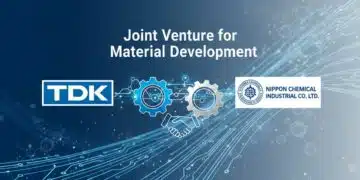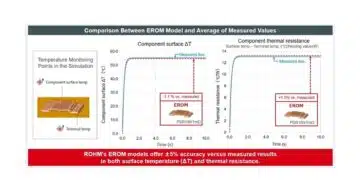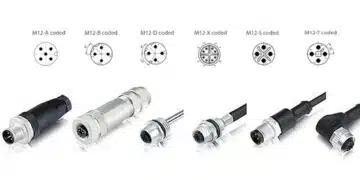NICHICON CORPORATION has developed the PCY series of SMD chip-type conductive polymer aluminum solid electrolytic capacitors featuring high heat and moisture resistance, as well as long life—designed to meet the growing demand for heat resistance and longevity in next-generation communications systems. The series achieves industry-leading performance standards.
As 5G expands—with its ultra-high speeds, high capacity, low latency, and support for multiple simultaneous connections—power consumption in communications infrastructure continues to rise.
Looking ahead to 6G, expectations are rising for further advancements in these characteristics, along with ultra-low power consumption, enhanced coverage scalability, autonomy, and ultra-high safety and reliability.
As a result, capacitors are expected to meet even higher reliability standards moving forward. In particular, macrocells and outdoor small cells require products that can operate across wide temperature ranges, offer high moisture resistance, and remain maintenance-free.
The PCY series is an industry-leading chip-type conductive polymer aluminum solid electrolytic capacitor rated for 12,000 hours at 125°C. By meeting the above market demands, it will contribute to the advancement of information and communications infrastructure.
Features
Chip-type aluminum solid electrolytic capacitors using conductive polymers as electrolytes exhibit the polymer’s characteristically superior ESR in the high-frequency ranges, while maintaining stable product characteristics over long periods.
The PCY series offers guaranteed operation for 12,000 hours at 125°C and moisture resistance for 1,000 hours at 85°C and 85% R.H., thanks to a high heat-resistant sealing rubber that enhances airtightness and protects the conductive polymer from degradation, combined with an optimized conductive polymer electrolyte.
Specifications
| Series | PCY Series |
| Rated voltage range | 2.5V to 16V |
| Rated capacitance range | 100μF to 560μF |
| Category temperature range | -55℃ to 125℃ |
| Product dimensions | ⌀6.3mm × 6.7mmL |
| Life | 12,000 hours guaranteed at 125℃ |
| Terminal shape | Chip type |
| Samples | From April 2025 |
| Mass production launch | From July 2025 |
| Production plant | NICHICON (OHNO) CORPORATION FUKUI FACTORY 4-24-15 Technology Center, Tsuchifugo, Ohno-shi, Fukui (ISO 9001, IATF 16949, and ISO 14001 certified) |































